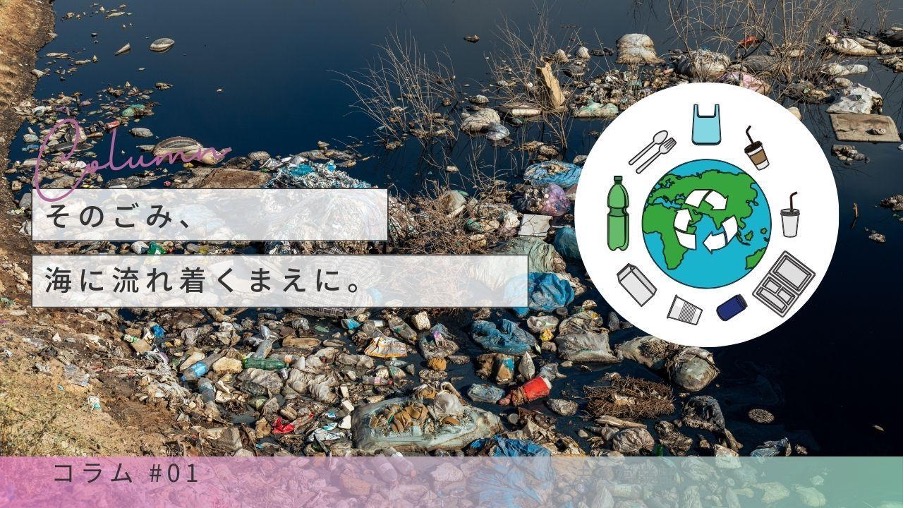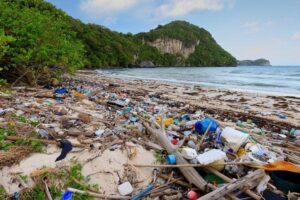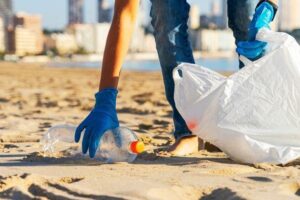INTERVIEW
in JAPAN

SPOGOMI works with the important theme of reducing marine litter. But why focus on “marine litter” in the first place? When people hear “waste problem,” many may think of littering in towns or sorting household garbage—issues on land. In reality, however, about 80% of the litter drifting in the ocean is said to have originated on land (※1). In other words, marine litter is an issue directly connected to our daily lives. In this article, we will look at the current state of marine litter, the impact of plastic waste, and compare global responses with Japan’s unique approach, while considering a shift toward a “society not premised on disposal.”
Plastic, so convenient and widely used that it has become indispensable in our daily lives, is an extremely familiar material. Plastic is used not only in easily recognizable items like PET bottles but also in home appliances, clothing, food containers, building materials, and automobile parts.

Behind this convenience lies a tendency toward disposability. As a result, it is often not reused as a resource, and much of it eventually flows into the ocean via rivers.
In other words, the fact that about 80% of marine litter originates not from the sea but from land again shows that marine pollution is an extension of our daily lives.
Plastic waste in particular takes a long time to biodegrade, pollutes both marine and terrestrial environments, and emits greenhouse gases when incinerated. Moreover, the effects on ecosystems, such as accidental ingestion of microplastics, are severe, and there are concerns about eventual impacts on human health, making it a highly serious issue.
Against this backdrop, the global shift toward “plastic-free” is accelerating. The EU has banned the distribution of single-use plastic products and set clear numerical targets for plastic bottle collection rates and recycled material usage. France has announced a policy to eliminate all single-use plastic packaging by 2040, and packaging for fruits and vegetables is already banned. In the U.S., measures vary by state, but a national strategy has been announced to achieve a 50% recycling rate, with companies and universities driving technological development (※2).
Japan’s approach, however, is somewhat different.The Plastic Resource Circulation Act, enacted in 2022, aims not to regulate plastic but to circulate it as a resource. From design to manufacturing, sales, collection, and recycling, businesses, municipalities, and consumers collaborate to build Circular Economy. The basic principle is “3R + Renewable”: Reduce, Reuse, Recycle, and replace with Renewable resources (※3).

This policy promotes a shift toward “economic activity not premised on disposal,” taking a different approach from mere regulation. Picking up litter is also an act that changes its course before it reaches the sea. Activities like SPOGOMI, by serving as a bridge between individual action and social systems, may foster the perspective of treating plastic as a “resource,” which could be the key to protecting the oceans of the future.
(※1)WWF “On the Issue of Marine Plastic”
(※2)Sources: Official EU website、Waste360、Official EPA announcement
(※3)Ministry of the Environment official website “The Plastic Resource Circulation Act”